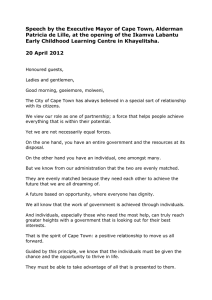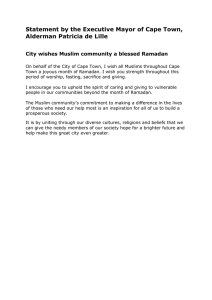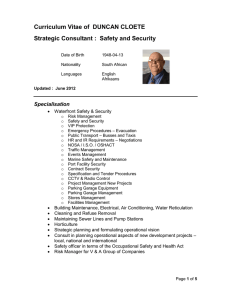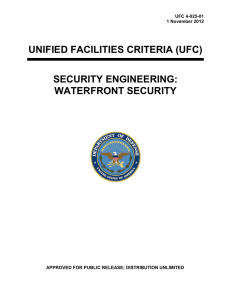2012 Energy Efficiency Forum Award winners
advertisement
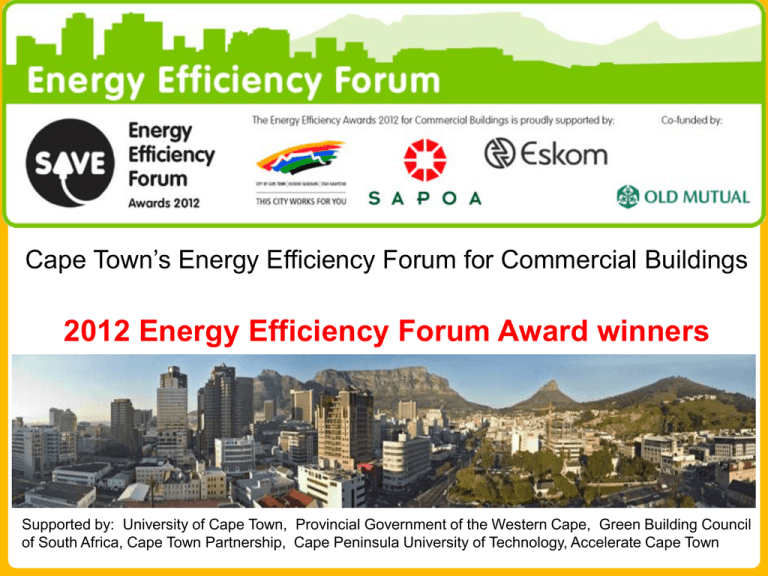
Cape Town’s Energy Efficiency Forum for Commercial Buildings 2012 Energy Efficiency Forum Award winners Supported by: University of Cape Town, Provincial Government of the Western Cape, Green Building Council of South Africa, Cape Town Partnership, Cape Peninsula University of Technology, Accelerate Cape Town EE Forum Award winner – V&A Waterfront Colin Devenish, Executive Manager Services & Security at the V&A Waterfront shared the ways in which the ‘Waterfront’ is working hard and fast toward more efficient use of resources in its electricity, air conditioning, landscaping and waste management practices. His basic rules are simple and easy to follow: Make utility management part of staff members’ key performance areas Set the example Don’t try to do everything at once - have a plan Base your actions on a sound business case Pick the low hanging fruits, and develop a track record Report on savings internally Meter, Meter, and Meter, then analyse and act Benchmark (kl/m2, VA/m2, kWh/m2), and prioritise Cont… V&A Waterfront Investment of R22 million - saving of 11,3 GWh or 15,5% of energy consumed. These projects include: Installation of lighting controls; Installation of energy efficient lighting and repositioning/relocation of light fittings; Upgrading of the air-conditioning building management system; Installation of new chillers and variable speed drives on pumps and motors; Installation of meters and development of credible metering and billing systems; Inclusion of targets in staff performance contracts; Tenant workshops to educate tenants on ESKOM funding initiatives, introduce them to suppliers, and the V&A Waterfront initiatives. They are also reviewing tenant interior designs and advising them on cost effective and energy saving designs; Establishment of a Sustainability Committee and registration with the Heritage Environmental Rating Programme (achieved Silver Rating); Benchmarking and identification of areas requiring attention. EE Forum Award winner – Vunani Properties, 14 Loop Street Tenanted entirely by the Department of Water Affairs and Forestry – retrofit includes: Dual-flush toilets; waterless urinals; Double-glazed windows; tinted windows; Strategic placement of fluorescent light boxes to limit number required; Development of floor space to optimise the use of natural light; Introduction of open plan offices to allow free flow of air with limited need for cooling or heating through the central air-conditioning system; Installation of whirly birds in the penthouse and retrofitting of efficient light bulbs and rain water reticulation; Renewable resources such as bamboo have been used, as well as recycled materials such as aluminium; Installation of ducted variable refrigerant volume VRV per floor for airconditioning has resulted in a 30% saving over console units or R15/m².





